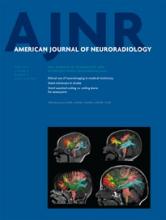Abstract
BACKGROUND AND PURPOSE: Neurointerventions in children have dramatically improved the clinical outlook for patients with previously intractable cerebrovascular conditions, such as vein of Galen malformations and complex arteriovenous fistulas. However, these complex and sometimes lengthy procedures are performed under fluoroscopic guidance and thus unavoidably expose vulnerable pediatric patients to the effects of ionizing radiation. Recent epidemiologic evidence from a national registry of children who underwent CT scans suggests a higher-than-expected incidence of secondary tumors. We sought to calculate the predicted risk of secondary tumors in a large cohort of pediatric neurointerventional patients.
MATERIALS AND METHODS: We reviewed our cohort of pediatric neurointerventions, tabulated radiation dose delivered to the skin, and calculated the range of likely brain-absorbed doses by use of previously developed mathematical models. The predicted risk of secondary tumor development as a function of brain-absorbed dose in this cohort was then generated by use of the head CT registry findings.
RESULTS: Maximal skin dose and brain-absorbed doses in our cohort were substantially lower than have been previously described. However, we found 1) a statistically significant correlation between radiation dose and age at procedure, as well as number and type of procedures, and 2) a substantial increase in lifetime predicted risk of tumor above baseline in the cohort of young children who undergo neurointerventions.
CONCLUSIONS: Although neurointerventional procedures have dramatically improved the prognosis of children facing serious cerebrovascular conditions, the predicted risk of secondary tumors, particularly in the youngest patients and those undergoing multiple procedures, is sobering.
ABBREVIATIONS:
- MSD
- maximal skin dose
- RAD-IR
- Radiation Doses in Interventional Radiology Procedures
- © 2014 by American Journal of Neuroradiology












